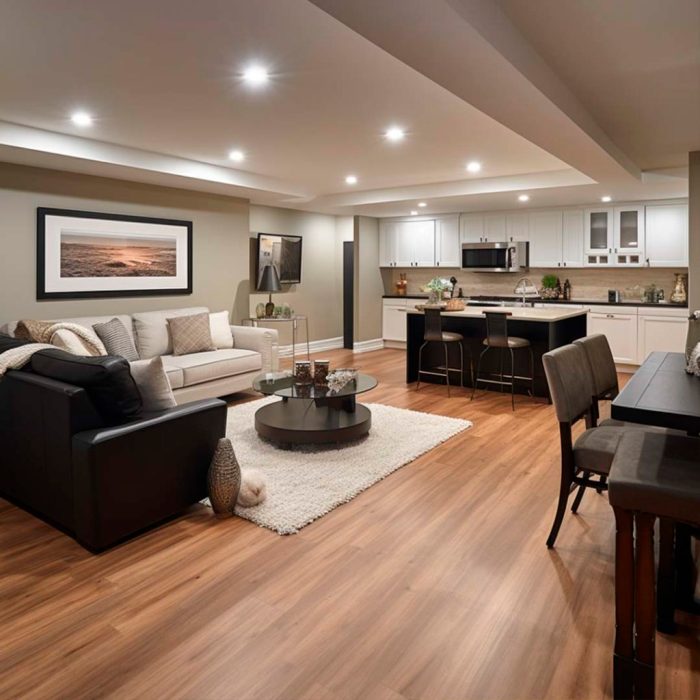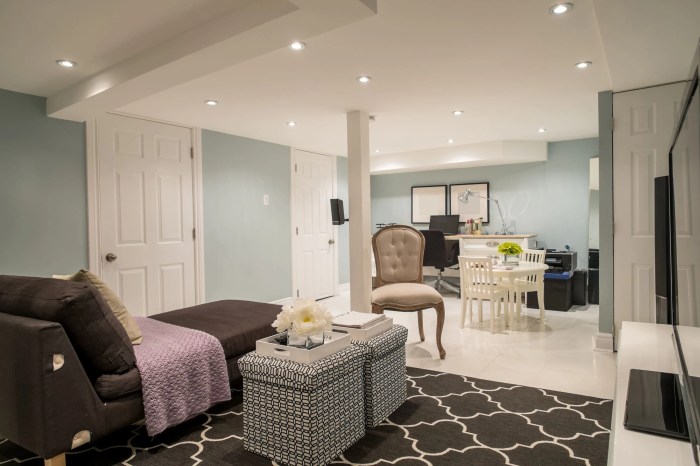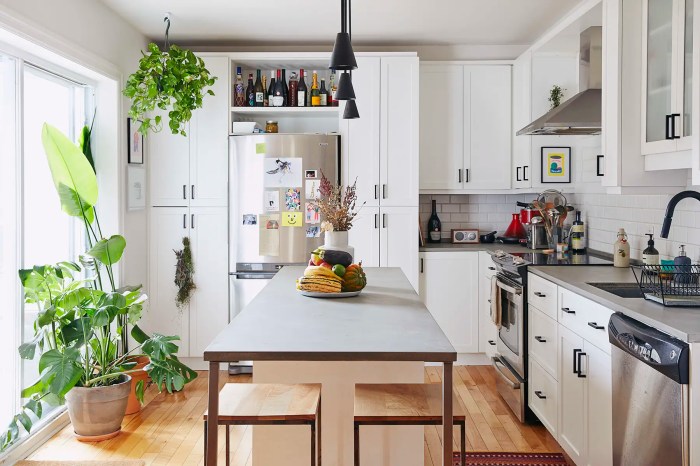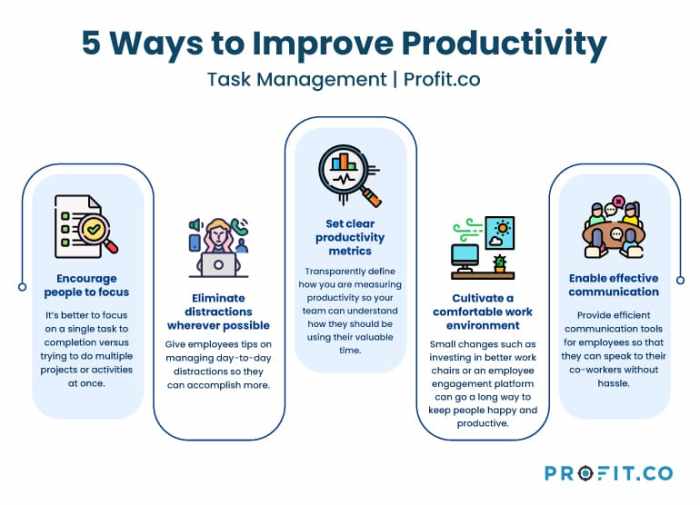
Unlocking the potential of your basement can be a rewarding home improvement project, transforming an often-neglected space into a functional and inviting living area. With careful planning and execution, you can create a comfortable and stylish environment for relaxation, entertainment, or even a home office. This guide will provide a comprehensive overview of the process, from initial planning to finishing touches, helping you navigate the challenges and maximize the benefits of a basement renovation.
While basement renovations offer a unique opportunity to expand your living space, they also present unique challenges. Moisture control, proper ventilation, and structural considerations are crucial aspects that need to be addressed. Understanding these factors and planning accordingly will ensure a successful and enjoyable renovation process.
Planning Your Basement Renovation
Converting your basement into a functional living space can add valuable square footage to your home, creating a versatile area for various purposes. Whether you envision a home office, a playroom for kids, a guest suite, or a home theater, a basement renovation can significantly enhance your living experience.
Benefits of Basement Renovation
A basement renovation offers several advantages:
- Increased Living Space: A finished basement adds valuable square footage, expanding your home’s usable area.
- Enhanced Home Value: A well-designed and finished basement can increase your home’s resale value, making it more attractive to potential buyers.
- Versatility and Functionality: A basement can be customized to accommodate various needs, such as a home office, a guest suite, a playroom, or a home theater.
- Energy Efficiency: A finished basement can help improve your home’s energy efficiency by providing an extra layer of insulation.
Potential Challenges and Limitations
While basement renovations offer numerous benefits, they also present potential challenges and limitations:
- Moisture Issues: Basements are prone to moisture problems, which can lead to mold growth and structural damage. Proper waterproofing and ventilation are crucial.
- Limited Natural Light: Basements typically lack natural light, requiring careful planning for adequate artificial lighting.
- Ceiling Height: Low ceiling heights can make a basement feel cramped and claustrophobic. Consider raising the ceiling or using creative design solutions.
- Access and Egress: Ensure adequate access and egress points, including windows and doors, to meet building codes and safety requirements.
Planning and Budgeting
Planning and budgeting are crucial for a successful basement renovation:
- Define Your Goals: Determine the purpose of your basement renovation and the desired features and functionalities.
- Create a Detailed Plan: Develop a comprehensive plan outlining the scope of work, materials, and finishes.
- Get Professional Estimates: Obtain quotes from reputable contractors for various aspects of the renovation, including structural work, electrical, plumbing, and finishing.
- Allocate a Realistic Budget: Factor in all costs, including materials, labor, permits, and unexpected expenses.
- Prioritize and Phase Work: Consider prioritizing essential work and phasing the project to manage costs and timeframes.
Necessary Permits and Inspections
Obtaining the necessary permits and inspections is crucial for a legal and safe basement renovation:
- Building Permit: Contact your local building department to determine the required permits for basement renovations.
- Electrical Inspections: Ensure all electrical work meets local codes and safety standards by scheduling inspections.
- Plumbing Inspections: Obtain plumbing inspections for any new or modified plumbing fixtures and systems.
- Fire Safety Inspections: Ensure compliance with fire safety codes, including smoke detectors, fire extinguishers, and egress points.
Designing Your Basement Living Space

Transforming your basement into a functional living space goes beyond structural changes. It involves careful design considerations to create a comfortable and aesthetically pleasing environment.
Design Styles for Basement Living Spaces
Basement design styles should complement the overall style of your home and reflect your personal preferences. Consider the following options:
- Modern: Clean lines, minimalist furniture, and a neutral color palette with pops of bright accents characterize modern design. Natural materials like wood and stone create a sophisticated look.
- Contemporary: Similar to modern but with a focus on functionality and comfort. It incorporates bold geometric shapes, vibrant colors, and innovative materials.
- Rustic: Embrace the warmth and charm of a rustic style with exposed beams, reclaimed wood, and earthy tones. This style is perfect for creating a cozy and inviting atmosphere.
- Industrial: This style features exposed brick, metal accents, and vintage furniture. It’s ideal for a unique and edgy basement space.
Maximizing Natural Light in a Basement
While basements typically lack natural light, several strategies can maximize its presence:
- Install windows: If possible, adding windows to your basement will significantly increase natural light. Consider using large windows or skylights for optimal light penetration.
- Use light wells: Light wells are shafts that extend from the basement to the ground level, allowing natural light to filter in. They can be an effective solution if adding windows is not feasible.
- Paint walls in light colors: Lighter shades reflect light better than dark ones, making your basement appear brighter and more spacious.
- Use mirrors: Mirrors can reflect existing light sources, making the space feel more illuminated. Strategically placed mirrors can create a sense of depth and openness.
Designing a Functional Layout for Basement Space
Creating a functional layout is crucial for a comfortable and practical basement living space.
- Consider the purpose: Determine the primary function of your basement space. Is it a home theater, a playroom, a guest room, or a combination of these? This will help you plan the layout and allocate space accordingly.
- Define zones: Divide the basement into distinct zones based on their purpose. For example, a home theater zone, a playroom zone, and a sleeping zone. This helps create a sense of organization and flow.
- Traffic flow: Consider the flow of traffic within the space. Ensure walkways are wide enough and free of obstructions.
- Furniture placement: Carefully position furniture to maximize space and create a comfortable and inviting atmosphere. Consider using multi-functional furniture to save space.
Choosing the Right Flooring, Walls, and Ceiling Finishes
The right flooring, walls, and ceiling finishes can significantly impact the look and feel of your basement.
- Flooring: Consider practical and durable options like tile, laminate, or engineered hardwood. Avoid carpet, which can trap moisture and create a damp environment.
- Walls: Painted drywall is a cost-effective and versatile option. You can also consider using wallpaper, paneling, or exposed brick for a unique look.
- Ceiling: A standard drywall ceiling is a common choice. You can add interest with decorative beams, recessed lighting, or a dropped ceiling.
Basement Foundation and Structure
A solid foundation is crucial for a successful basement renovation. Before you start planning your dream living space, you need to ensure that the foundation is structurally sound and capable of handling the additional load. This includes assessing the foundation’s integrity, waterproofing, and ventilation.
Inspecting and Reinforcing the Basement Foundation
A thorough inspection is the first step to ensure the foundation’s stability. Look for cracks, leaks, and signs of movement in the foundation walls and floor. A professional engineer can provide a comprehensive assessment and recommend necessary repairs. If you discover cracks, consult an expert to determine their severity and whether they require reinforcement.
Waterproofing and Moisture Control
Moisture control is essential for a healthy and comfortable basement living space. Here are some techniques to prevent water damage:
- Exterior Waterproofing: This involves creating a barrier around the foundation to prevent water from entering. Techniques include applying waterproof coatings, installing drainage systems, and grading the soil around the foundation to direct water away from the basement walls.
- Interior Waterproofing: This focuses on preventing moisture from entering the basement from within. This can be achieved by installing a vapor barrier on the basement floor and walls, using moisture-resistant materials, and ensuring proper ventilation.
- Sump Pump Installation: A sump pump is an essential component of a basement waterproofing system. It collects water that seeps into the basement and pumps it away from the house.
Addressing Cracks and Leaks in the Foundation
Cracks in the foundation can be a sign of structural issues or simply cosmetic imperfections.
- Small Cracks: Small hairline cracks can be sealed with a waterproof sealant.
- Larger Cracks: Larger cracks may require more extensive repairs, such as injection grouting or concrete patching.
- Foundation Leaks: Leaks in the foundation can be addressed by applying waterproof coatings, installing drainage systems, or repairing damaged sections of the foundation.
Improving Basement Ventilation and Air Quality
Good ventilation is crucial for maintaining a healthy and comfortable basement environment. Here are some ways to improve ventilation:
- Install a Ventilation Fan: A ventilation fan can help remove moisture and stale air from the basement.
- Open Windows: When weather permits, opening basement windows can help improve air circulation.
- Install a Dehumidifier: A dehumidifier can help control humidity levels in the basement, preventing mold growth and moisture damage.
Electrical and Plumbing Considerations
Converting your basement into a livable space involves more than just aesthetics; it necessitates addressing the electrical and plumbing infrastructure to ensure safety and functionality.
Electrical Upgrades for Basement Living Spaces
A basement living space often requires significant electrical upgrades to meet the demands of everyday living.
- Increased Circuit Capacity: A dedicated circuit breaker panel is often necessary for a basement living space, ensuring adequate capacity for lighting, appliances, and outlets.
- Ground Fault Circuit Interrupters (GFCIs): GFCIs are crucial safety devices that protect against electrical shocks. They are required in bathrooms, kitchens, and other areas where water may be present.
- Adequate Outlets: Ensure sufficient outlets are installed for all electrical appliances, lighting fixtures, and electronic devices. Outlets should be strategically placed for convenience and safety.
Basement Plumbing Requirements
Plumbing in a basement renovation must cater to both drainage and water supply needs.
- Drainage System: Proper drainage is crucial for preventing moisture buildup and potential water damage. This may involve installing a sump pump, upgrading existing drains, or creating new drainage systems.
- Water Supply: Ensure a sufficient water supply for a bathroom, kitchen, or laundry area in the basement. This may require running new water lines or upgrading existing pipes.
Installing Lighting Fixtures and Outlets
The placement and type of lighting fixtures and outlets are important considerations in a basement living space.
- Lighting Fixtures: Choose lighting fixtures suitable for the basement environment. Consider using LED bulbs for energy efficiency and longevity.
- Outlet Placement: Strategically place outlets throughout the basement, ensuring convenient access for appliances and electronic devices.
Ensuring Proper Ventilation
Ventilation is essential for a healthy and comfortable basement living space.
- Appliance Ventilation: Ensure proper ventilation for appliances like stoves, ovens, and dryers. This may involve installing exhaust fans or venting systems.
- Fixture Ventilation: Consider ventilation for bathrooms and laundry areas to prevent moisture buildup and ensure proper air circulation.
Finishing Touches for Your Basement Living Space

Now that you’ve addressed the foundational aspects of your basement renovation, it’s time to add the finishing touches that will transform your space into a comfortable and inviting living area.
Creating a Cozy and Inviting Atmosphere
A well-designed basement living space should feel welcoming and inviting, like an extension of your home’s living areas. Consider the following tips to create a cozy and inviting atmosphere:
- Choose the right furniture: Select comfortable seating, like sofas, armchairs, and ottomans, to create a relaxing space for gathering.
- Incorporate soft textures: Add soft throws, pillows, and rugs to enhance the coziness of the space.
- Use warm lighting: Opt for warm-toned lighting fixtures, like lamps and sconces, to create a welcoming ambiance.
- Add greenery: Plants can bring life and vibrancy to a basement space.
- Choose a color scheme: Select colors that create a calm and inviting atmosphere.
Incorporating Storage Solutions
Basements often lack natural light, so creating a functional living space requires clever storage solutions. Here are some ideas:
- Utilize built-in shelving: Built-in shelving can provide ample storage space while also adding a decorative element to the space.
- Install cabinets: Cabinets can be used to store items that need to be hidden away.
- Use storage ottomans: Storage ottomans provide both seating and storage, making them a practical choice for small spaces.
- Install a closet: A closet can provide valuable storage for clothing, shoes, and other belongings.
- Utilize wall-mounted storage: Wall-mounted shelves, hooks, and organizers can help maximize vertical space.
Creating a Comfortable and Functional Living Space
A comfortable and functional basement living space should be designed with the needs of its users in mind. Consider the following tips:
- Adequate ventilation: Ensure that the basement has proper ventilation to prevent moisture buildup and maintain a comfortable temperature.
- Soundproofing: Soundproofing can help to reduce noise from the rest of the house or from outside.
- Proper lighting: Adequate lighting is essential for a comfortable and functional living space.
- Comfortable flooring: Choose flooring that is comfortable to walk on and that is easy to clean.
- Choose the right furniture: Select furniture that is comfortable and functional for the intended use of the space.
Adding Personal Touches and Creating a Unique Style
Adding personal touches is what makes a basement living space truly unique. Consider the following tips:
- Incorporate family photos: Display family photos to personalize the space and create a warm and inviting atmosphere.
- Use artwork: Artwork can add color, texture, and personality to the space.
- Add decorative accents: Use decorative accents, like throw pillows, blankets, and candles, to create a unique and inviting atmosphere.
- Choose a theme: Choose a theme that reflects your personal style, such as a nautical theme, a rustic theme, or a modern theme.
- Consider your hobbies: Incorporate your hobbies into the design of the space. For example, if you enjoy reading, create a cozy reading nook.
Home Improvement Straw
Looking for a sustainable and eco-friendly way to renovate your basement? Consider using straw bales! Straw bale construction is a natural building technique that offers a range of environmental benefits and can be used in various ways for your basement renovation project.
Advantages and Disadvantages of Straw Bale Construction
Straw bales are a renewable and readily available resource, making them a sustainable choice for building materials. They offer excellent insulation properties, contributing to a more energy-efficient and comfortable living space. Straw bales are also fire-resistant when properly installed and treated, providing a safe and secure environment for your basement. However, it’s essential to consider the potential disadvantages as well.
Straw bales require proper moisture management to prevent mold and mildew growth. They also need to be protected from pests and rodents, which can be addressed through proper planning and construction techniques.
Examples of Straw Bale Use in Basement Renovations
Straw bales can be used in various ways for basement renovations. They can be incorporated into the walls, creating a natural and sustainable insulation layer. Straw bales can also be used to build partition walls, dividing the basement into different functional areas. In addition, straw bale construction can be used to create raised platforms or benches, adding a unique and natural touch to your basement living space.
Resources and Information on Straw Bale Construction
If you’re interested in using straw bales for your basement renovation, several resources and information are available to help you get started. The Straw Bale Building Association of North America (SBBA) offers a wealth of information on straw bale construction, including design guidelines, building codes, and best practices. You can also find numerous online resources and tutorials that provide step-by-step instructions and tips for incorporating straw bales into your project.
By carefully planning, addressing structural concerns, and incorporating design elements that enhance functionality and comfort, you can transform your basement into a valuable addition to your home. From creating a cozy family room to a dedicated home office or entertainment space, the possibilities are endless. Remember, with a well-executed renovation, your basement can become a cherished and functional part of your living environment, adding value to your home and enhancing your lifestyle.
Question & Answer Hub
What are the common mistakes to avoid during a basement renovation?
Common mistakes include neglecting moisture control, overlooking structural issues, improper electrical wiring, and insufficient ventilation.
How much does a basement renovation typically cost?
The cost varies greatly depending on the scope of the project, materials used, and labor costs. It’s best to consult with contractors for accurate estimates.
Can I do a basement renovation myself, or should I hire a contractor?
The complexity of the renovation will determine whether you can handle it yourself. For major structural work or complex electrical and plumbing tasks, hiring a contractor is recommended.




